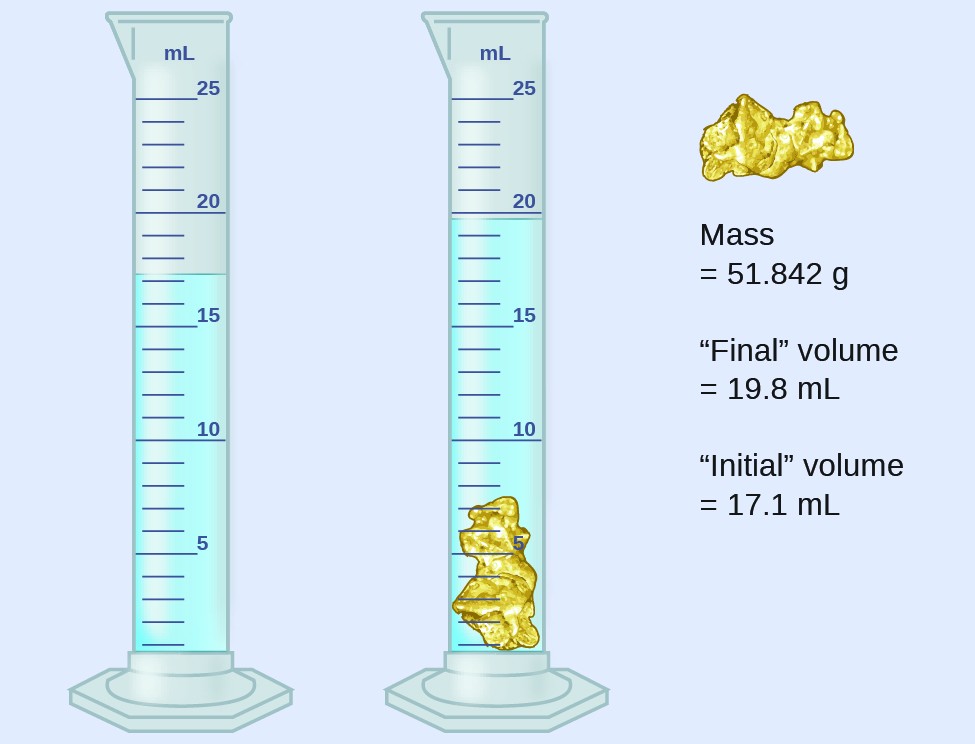Question #6d9dd
1 Answer
Explanation:
The idea here is that you will use the volume of displaced water to determine the volume of the stone, then use the stone's mass to determine its density.
Notice that you're starting with
So why did this happen? The stone has a volume of its own, and so you can say that the change in the level of the water was caused by the added volume of the stone.
#V_"final" = V_"water" + V_"stone"#
#V_"stone" = V_"final" - V_"water"#
#V_"stone" = "7.0 mL" = "2.0 mL" = "5.0 mL"#
You know the volume of the stone and its mass, which means that you can determine its density by using the formula
#"density" = "mass"/"volume"" "# , or#" "rho = m/V#
In your case, you would get
#rho = m/V = "25 g"/"5.0 mL" = color(green)("5.0 g/mL")#
This means that each mililiter of stone has a mass of
Here's how the procedure would look like - this example uses other values for the initial volume and the final volume of the cylinder.

Can you use this example to find the density of the piece of gold?

